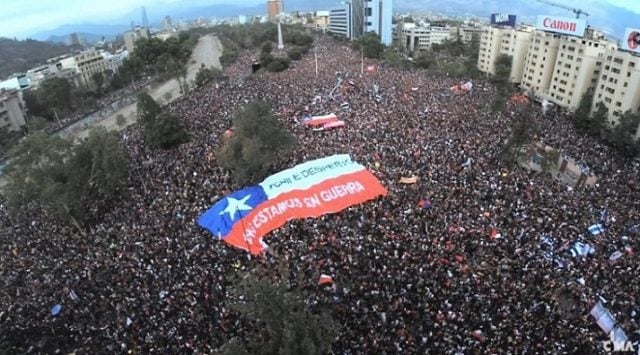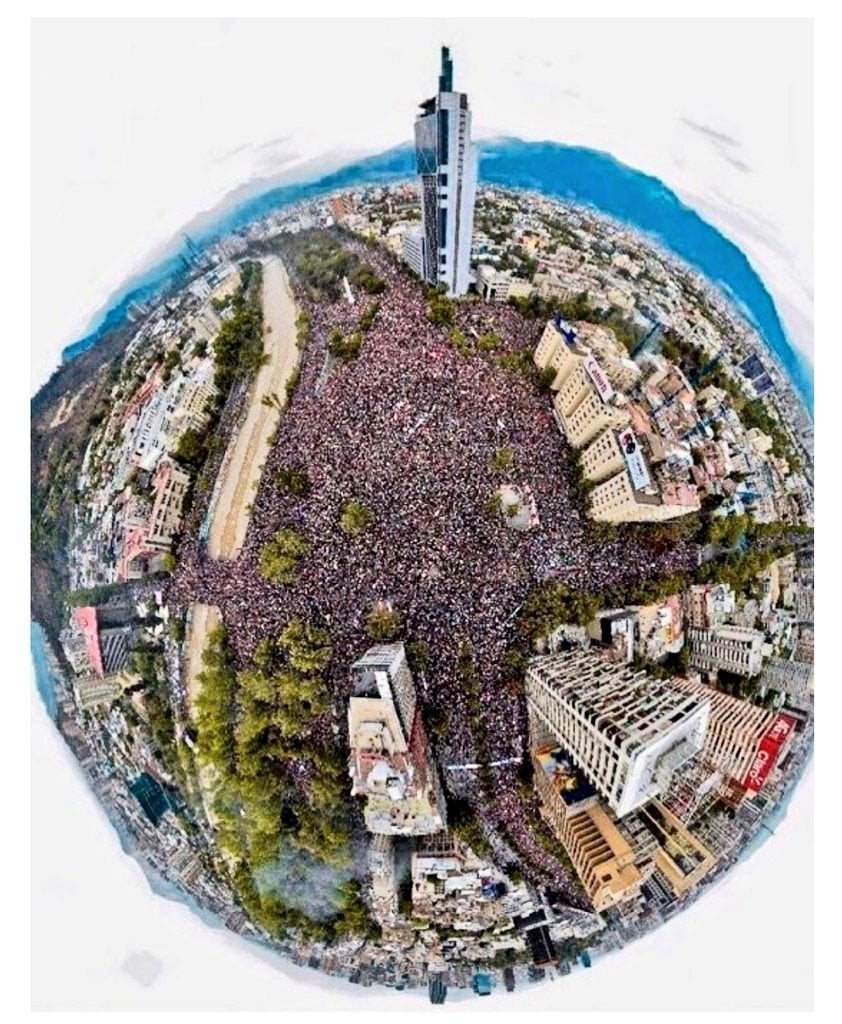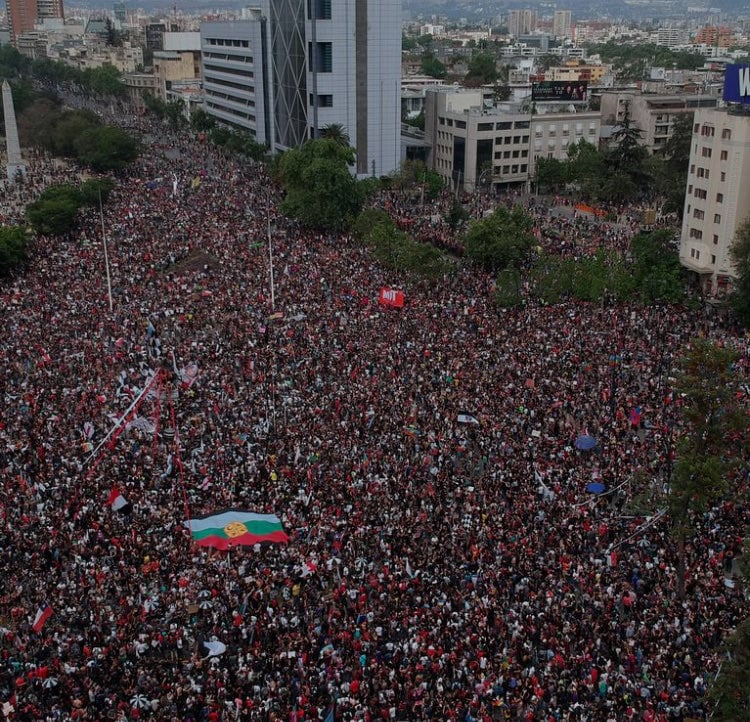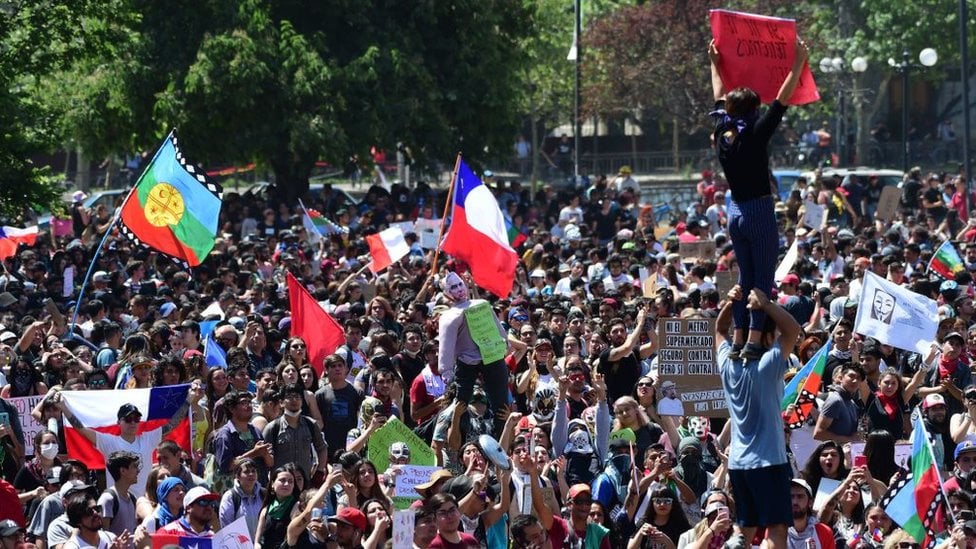Original article: La marcha más grande de Chile: A 6 años de un hito histórico con más de un millón de personas en Santiago
Six Years Since 25-O: The March That Shook Chile with 1.2 Million in Santiago and Hundreds of Thousands Across Regions
On October 25, 2019, during an unprecedented social crisis, a massive crowd estimated at over 1.2 million people flooded the streets of Santiago, creating what is now known as «the largest march in Chile.» This day is forever etched in the collective memory of the nation.
The then Metropolitan Governor, Karla Rubilar, confirmed the event’s magnitude on national television, stating: «We have over one million people at this march; we are estimating around 1.2 million people, all completely peaceful,» as reported by Radio Cooperativa, highlighting the broad support for the demonstration.
The spontaneous call to action came without traditional political leadership and emerged after a week of intense protests. Outlets like BBC Mundo described it as “the historic march of over a million people who took to the streets of Santiago”, a figure that resonated across numerous cities nationwide, even reaching three million participants, thus branding it as the most mass mobilization since the return to democracy.
The demand was clear: dignity. Under this banner, calls for social justice, an end to abuses, fair pensions, and a new social pact converged. As reported by Radio Biobío, demonstrators demanded “the withdrawal of military forces from the streets, the repeal of all laws against the people, and the establishment of a new constitution through a Constituent Assembly.”
The day’s peaceful and festive character was its hallmark. El Ciudadano’s minute-by-minute coverage captured the spirit of the day from the streets of Santiago.
Additionally, a special feature published by El Ciudadano showcased “the moments that defined ‘The Largest March in Chile’—the historic day when Chile awoke.” Even then-President Sebastián Piñera acknowledged on his X (formerly Twitter) account: “The massive, joyful, and peaceful march today, where Chileans are calling for a more just and supportive Chile, opens great paths for the future and hope,” a sentiment echoed by international news agencies.
Today, six years after this civic eruption, the October 25 march stands not just as a memory but as a beacon of social mobilization’s power. CIPER Chile encapsulated it in their photo report at the time, describing it as “the march of the discontent that overflowed Santiago,” a lasting demonstration that when citizens awaken, they can write the most significant chapters of their own history.
Izquierda Diario reported on that October 25, 2019: “A Friday of protests in Chile: millions marched across the country … A week after the uprising began in Chile, mobilizations were recorded in major cities, including Valparaíso, where protesters surrounded Congress and faced brutal repression.”
Six Years Since the Historic Milestone
Six years later, the echoes of that day resonate strongly in social memory. Deputy Hernán Palma reflected on Instagram: “Six years ago, over a million of us took to the streets peacefully to demand a more just, supportive, and dignified Chile. That civic energy marked a turning point in our recent history.” His reflection underscores the persistence of that hopeful mobilization spirit.
Social media continues to keep the fire alive. User «Roberto Merkén» recalled on X: “On this day in 2019, over 1 million people filled the Alameda to demand a more just Chile. It was one of the most massive marches in our history, symbolizing accumulated discontent against abuses, low wages, and miserable pensions.”
Meanwhile, on Instagram, Jean_Flores_Quintana stated: “⭕️ Today marks 6 years since a milestone: the largest march in our history. ✊ Millions of voices united by a common demand: dignity.”
Denisse remarked: “Six years after the largest march in Chile, which gathered 1.2 million people in Santiago and more than 2 million nationwide… Historic!”
Network of Free Press: “Do you remember? #Chile: On October 25, 2019, «the largest march in history» demanded education, health, housing, an end to private pensions, and dignified living. «The people decide where this goes. Whether it’s resolved in the streets or Congress. And if tomorrow the discussions fail, remember those who made false promises… A people without memory is a people without future.”
Mobilization Across Regions
The strength of the mobilization extended beyond the capital. Media documented how the regions joined the historic strike, publishing images of “the largest march in history” in cities such as Iquique, Concepción, Valparaíso, Puerto Montt, and Temuco, echoing calls for social equality and against an economic model that perpetuates inequality.
Despite the time elapsed, the sense that the central demands remain relevant persists. The Popular Party stated on X: “On October 25, 2019, the people of Chile made history. Millions took to the streets to demand dignity, justice, and rights. Six years later, we are still waiting for that hope to translate into real change,” reflecting a sentiment that underscores the evaluations of a change process that many believe is still falling short of the expectations generated on that day.











